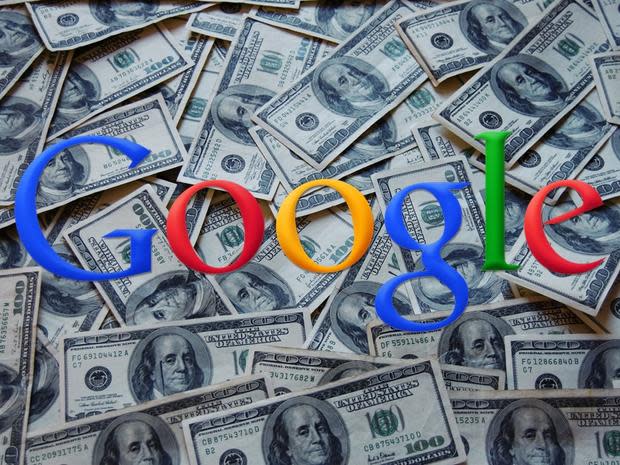Google's 2014 shopping spree: A look back at its biggest buys

Image: Wikimedia Commons/Jericho/Moritz Wickendorf
Google has serious buying power as a company, and its never shied away from investing money in a market or trend it sees value in. YouTube, DoubleClick, and Android, some of the most successful products for Google, were all initially acquired.
The search giant acquired more than 30 companies in 2014, and it has made some interesting choices. While most of the acquired companies were founded in the US, Google also picked up some businesses from Switzerland, Israel, Canada, Finland, and the UK.
What's more interesting than the various geographies represented is the verticals and markets that these companies inhabit. There's no denying that Google is the king of search, but its portfolio of acquisitions points to a diversified strategy and an interest in emerging tech.
Here are some of the main types of businesses that Google invested in and what their acquisitions might mean for the company's strategy in the coming years.
Internet of Things
The Internet of Things (IoT) is one of the breakout markets of 2014. Advances in big data and sensor technology led to an explosion of connected devices and home automation products. Here are the IoT companies that Google acquired in 2014:
Nest Labs, smart thermostat
MyEnergy, online utility use management
DropCam, home monitoring connected cameras
Revolv, smart home automation hub
It's clear by the nature of the companies that Google acquired in this space that Google's IoT play is focused almost exclusively on home automation. The $3.2 billion acquisition of Nest Labs was the most public acquisition in the space, and perhaps of the whole year, because of the price tag and the supposed novelty of a connected thermostat.
The acquisition of MyEnergy was an investment in the value of the Nest product, but acquiring DropCam helped to fill out the company's smart home offerings. Google also acquired Revolv, a company that produced hubs to connect smart devices, but shut the company down in October.
Artificial intelligence
Through its Google X division, Google is known for taking on moonshot projects that might not necessarily have a clear value proposition. However, recent investments in artificial intelligence (AI) are one of the few such projects that have many real-world applications. Here are the AI companies that Google acquired in 2014:
DeepMind Technologies, builder of neural networks
Jetpac, machine learning-powered image searches
Dark Blue Labs, deep learning and natural language processing
Vision Factory, deep learning and visual recognition
DeepMind did for AI what Nest did for IoT at Google, gave a branding name and face to a new division. At the time of purchase, DeepMind was one of the premier startups focused on deep learning, a field of AI focused on neural networks, computer vision, speech recognition, and natural language processing.
AI acquisitions are strategic for Google across its revenue streams because it helps the company glean new information from text input, pictures, and video. So, AI has practical applications in bettering search and core video products, but it also has the potential to improve Google's other moonshot efforts, such as self-driving cars.
Cloud computing
Google's cloud services stepped into the spotlight this past year. Special shout-outs and updates to the Google Cloud Platform at I/O, as well as a few pricing specials show Google pushing hard to get developers and businesses on board with its infrastructure and tools. Google also acquired quite a few cloud companies to further broaden its offerings. Here are the cloud companies that Google acquired in 2014:
Stackdriver, system and infrastructure monitoring
Appurify, mobile cloud testing platform
Zync Render, cloud rendering for visual effects
Firebase, backend as a service
Firebase is probably the most notable of these acquisitions. It gives developers an easier way to quickly build out mobile apps using its backend service. This complements the Google Cloud Platform because it better positions Google to help developers scale across platforms.
Additionally, Stackdriver was quickly integrated with existing Google products and was revealed as the force behind Cloud Monitoring tool unveiled at this summer's I/O, which was announced along with Cloud Save, Cloud Debugger, and Cloud Trace. These tools were only a part of the many new cloud-based developer tools that Google launched at I/O, proving that Google is taking a real stab at the business of cloud development.
Advertising
Being that Google is the best at what it does in online advertising, it makes sense that Google acquired some advertising companies in 2014. According to Google's numbers, advertising made up 91% of the company's revenue in 2013, and the money seems to be on track to hit a similar percentage at the end of this year. Here are the advertising companies that Google acquired in 2014:
spider.io, advertising fraud protection
Adometry, improves advertising performance
mDialog, video advertising management
Adometry adds clear value on improving the way ads perform, and mDialog helps to better the delivery of video ads, but spider.io is the acquisition that stands out. Enterprise data security was one of the hot topics in 2014 with Target, Home Depot, and Sony all suffering very public data breaches. Being able to offer another layer of security through advertising fraud protection will help solidify Google's ad offering to enterprise customers.
For those interested in an exhaustive list of Google's acquisitions, you can find a pretty good one on Wikipedia.

